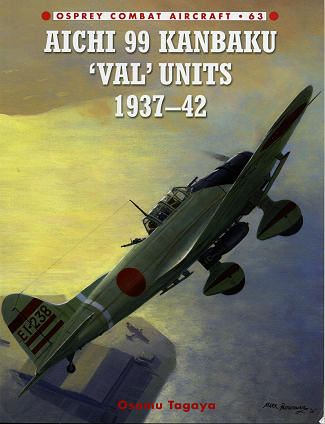 Strictly
a WWII aircraft type, the dive bomber was able to wreak a great deal of havoc on
those on the receiving end of their bombs; as long as they had proper air cover.
In Germany, it was the Ju-87, in the US it was the SBD, and in Japan it was the
Aichi Type 99. All three of these aircraft were purpose built to place their
bomb load directly on target by what is the best way possible; to use the
aircraft to aim the bomb. It is difficult to say which one of these three was
the most effective ship killer. All of them were proven in combat, and all of
them sank dozens of ships, but I think one has to give the nod to the Ju-87.
Strictly
a WWII aircraft type, the dive bomber was able to wreak a great deal of havoc on
those on the receiving end of their bombs; as long as they had proper air cover.
In Germany, it was the Ju-87, in the US it was the SBD, and in Japan it was the
Aichi Type 99. All three of these aircraft were purpose built to place their
bomb load directly on target by what is the best way possible; to use the
aircraft to aim the bomb. It is difficult to say which one of these three was
the most effective ship killer. All of them were proven in combat, and all of
them sank dozens of ships, but I think one has to give the nod to the Ju-87.
While on the subject of the Ju-87, it was as much the
Germans that inspired the Japanese in developing the Type 99 as anything. The
Japanese were always buying a few modern aircraft from various countries in
order to study the way they were constructed, and it is through the purchase of
Heinkel He-50 airframes that the interest grew.
The Army had little interest in this type of aircraft,
but the Navy recognized that these would be very useful against maneuvering
ships, which are notoriously difficult to hit using regular bombing methods.
Eventually, the Type 99 was chosen with the first prototype flying in late 1937.
This actually means that the title of the book is optimistic as the first actual
Type 99 unit was not formed until 1940 with the type being chosen for production
in December 1939.
From there on, the pilots of these planes honed their
skills to perfection, units being attached to every Japanese fleet carrier in
the early years of the Pacific war. It was a Type 99 that dropped the first bomb
at Pearl Harbor and went on to sink both civilian and military ships of many
nations in the first six months of the war.
This book follows a typical format as author Osamu
Tagaya covers the history of dive bombing in the IJN, the development of the
aircraft, its initial use in China, and then its string of successes in the
first six months of the Pacific War. It is the operation of these planes at
Pearl Harbor, the advance to the Netherlands East Indies, operations in the
Indian Ocean that cause the Royal Navy to flee for nearly two years, Coral Sea
and finally Midway in June of 1942. This is where the book ends. While the Type
99 went on to be improved and served until the end of the war, its hey-days were
over in 1942.
In line with other similar titles, there are a plethora
of period photos of men and machines, many of which are new to this reviewer.
This also includes several pages of full color profiles, but it is the combat
operations that are by far the most interesting part of the book.
It makes for a book about an aircraft that many in the
West have heard of, but few knew anything about. It is most highly recommended.
January 2012
For more on the complete line of Osprey books,
visit www.ospreypublishing.com. In the US, it is
Osprey Direct at 44-02 23rd St, Suite 219, Long Island City, NY 11101., where you can
get a catalogue of available books.
If you would like your product reviewed fairly and quickly, please
contact
me or see other details in the
Note to
Contributors.
 Strictly
a WWII aircraft type, the dive bomber was able to wreak a great deal of havoc on
those on the receiving end of their bombs; as long as they had proper air cover.
In Germany, it was the Ju-87, in the US it was the SBD, and in Japan it was the
Aichi Type 99. All three of these aircraft were purpose built to place their
bomb load directly on target by what is the best way possible; to use the
aircraft to aim the bomb. It is difficult to say which one of these three was
the most effective ship killer. All of them were proven in combat, and all of
them sank dozens of ships, but I think one has to give the nod to the Ju-87.
Strictly
a WWII aircraft type, the dive bomber was able to wreak a great deal of havoc on
those on the receiving end of their bombs; as long as they had proper air cover.
In Germany, it was the Ju-87, in the US it was the SBD, and in Japan it was the
Aichi Type 99. All three of these aircraft were purpose built to place their
bomb load directly on target by what is the best way possible; to use the
aircraft to aim the bomb. It is difficult to say which one of these three was
the most effective ship killer. All of them were proven in combat, and all of
them sank dozens of ships, but I think one has to give the nod to the Ju-87.